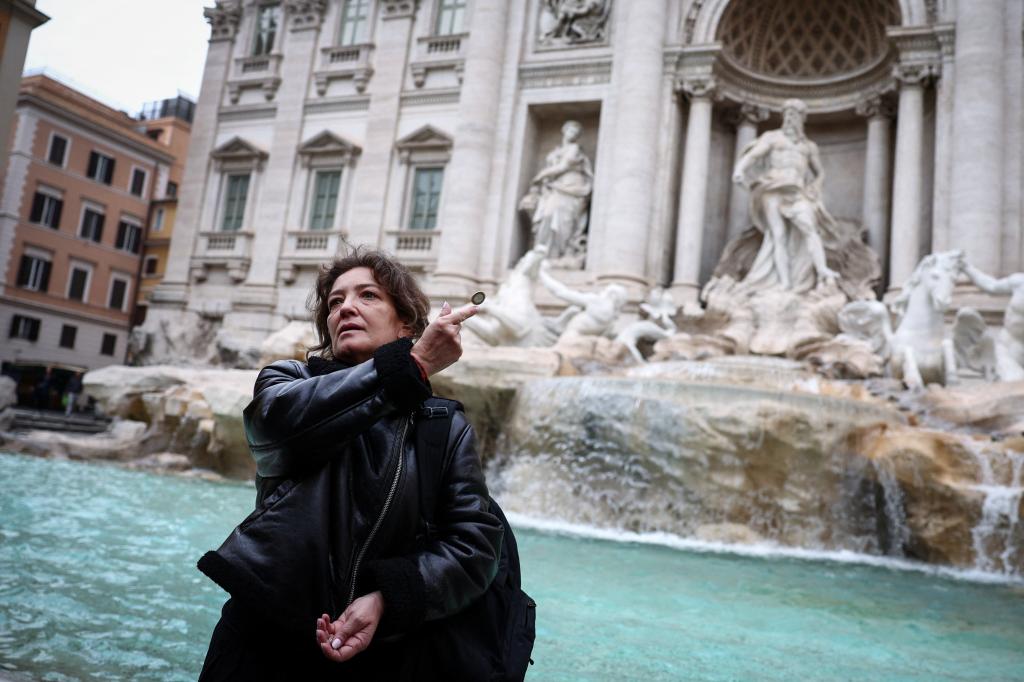Rome Considers Access Fee for Trevi Fountain Crowds
Explore Rome's plans for an access fee at the Trevi Fountain to manage crowds and preserve its cultural heritage for future generations.

Key Points
- Rome is considering an access fee for the Trevi Fountain
to manage the expected influx of tourists during the 2025 Jubilee.
- The proposed system would include advance reservations, remaining free for residents while charging non-residents a nominal fee of one to two euros.
- This initiative aims to curb overtourism and preserve the fountain's cultural heritage, ensuring a better experience for visitors.
The Trevi Fountain, an iconic symbol of Rome and one of the most photographed monuments in the world, is facing a transformative shift in how it manages the influx of tourists. As Rome prepares for a significant surge in visitors during the upcoming 2025 Jubilee, city officials are considering implementing an access fee to help control crowds and preserve the monument's integrity. This initiative reflects a growing trend among popular tourist destinations grappling with the challenges of overtourism.

The Problem of Overcrowding
The Trevi Fountain, completed in 1762, is renowned not just for its stunning Baroque architecture but also for the rich history and tradition that surrounds it. Every year, millions of tourists flock to toss coins into the fountain, a gesture said to ensure their return to Rome. However, this overwhelming foot traffic has made it difficult for visitors to truly appreciate the beauty of the site. As Rome's tourism numbers reached around 20 million even in a typical year, the expected influx of up to 32 million visitors for the Jubilee poses a significant challenge for local authorities.
According to Alessandro Onorato, Rome's tourism councillor, the idea of implementing a reservations system is aimed at primarily controlling the number of visitors at any given time. “We’re looking at an advance booking system”, he stated, indicating that access would likely remain free for residents while non-residents would face a minimal fee of one to two euros. This approach would echo measures already observed in other global cities struggling with similar issues, such as
and
.
Learning from Global Examples
Rome is not alone in addressing the pressures of overtourism. Cities like Venice have taken proactive steps by implementing entrance fees during peak seasons to manage crowds and preserve the local environment. Such measures not only ensure a more enjoyable experience for visitors but also help allocate resources more effectively in maintaining cultural sites.
For instance, Venice's entry fee has been credited with reducing the number of day-trippers who overwhelm the city without contributing significantly to its economy. Similarly, Barcelona has adopted time-slot systems for visits to its iconic sites, a model Rome might consider for the Trevi Fountain.

Preserving Cultural Heritage
Implementing an access fee at the Trevi Fountain does not solely revolve around crowd control. It also sheds light on the broader issue of preserving Italy's cultural heritage. With the passage of time, such historical attractions require increased maintenance and protection from the damage wrought by continuous throngs of visitors. Measures like limiting access or instituting fees can serve as a means to safeguard these monumental sites for future generations.
As the conversation around the Trevi Fountain progresses, Rome's decision-makers recognize that tourism must be sustainable, benefiting both the city and its residents while respecting the rich historical context. Mayor
has highlighted that managing the fountain is becoming “technically very difficult”, and these discussions are essential in creating a balanced approach to Rome's tourism landscape.
In a city where tourism forms a substantial part of the economy, it is vital to find effective ways to cater to visitors while preserving the integrity and charm of the city. This initiative toward a controlled access process at the Trevi Fountain marks the beginning of a new chapter in Rome’s tourism management.
The efforts to implement these changes reflect global trends in the tourism industry. By learning from the challenges faced by other cities and applying innovative solutions, Rome can continue to enchant future visitors while maintaining the beauty and history of its beloved landmarks.


